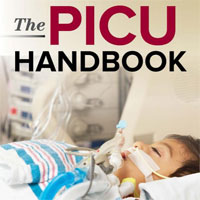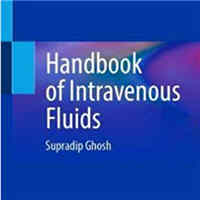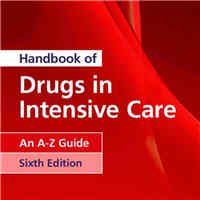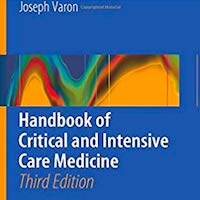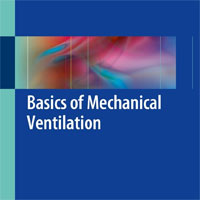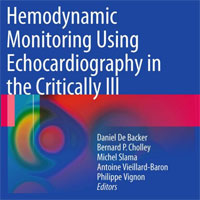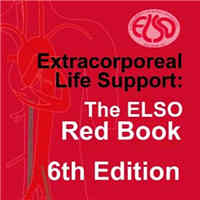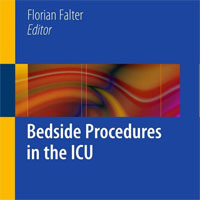Tag: intubation
Restoring Humanity In The ICU During COVID-19
Machines, tubes, wires, drugs, isolation, confusion... how can we protect the dignity and sanity of our patients when they're at their most vulnerable? Dr. Wes Ely is a Vanderbilt professor and critical care doc who can... read more
Top 5 COVID-19 Online Training Courses For Nurses
Nurses all around the country are being cross-trained to work in higher acuity or critical care patient areas as fast as possible to maximize efforts against COVID-19. But as nurses step out of their comfort zones, there... read more
COVID-19 Evolving Indications for Intubation
Hypoxemia and tachypnea should not be the sole indications for intubation, but rather a complete clinical assessment including work of breathing, mental status and increasing PaCO2 and/or acidosis. Based on experience... read more
COVID-19 Emergency Intubation Simulation Guidance
Glenfield Hospital have produced a simulation based on the above joint guidance which may be helpful for teaching and familiarisation. Small modifications have been made based on local resources and feedback. Thanks to the... read more
Safe Airway Society Principles of Airway Management and Tracheal Intubation Specific to the COVID-19
Transmission of COVID-19 is primarily through droplet spread. These droplets are affected by gravity and may cause direct transmission from close contact or contribute to surface contamination (where the virus may remain... read more
Impact of Paralytic Agent on Postintubation Sedation
The aim of this study was to evaluate the difference in the time to postintubation sedation between patients receiving etomidate and either succinylcholine or rocuronium in the prehospital setting. This study suggests... read more
Holding Intubated Infants Well Tolerated and Safe
Critically ill infants who are old enough to move on their own but too young to cooperate with care instructions have been among the last to benefit from patient mobility initiatives. Results from a holding intervention... read more
High Flow Nasal Cannula Benefits and Pitfalls
Emergency physicians should be familiar with the benefits and pitfalls of high-flow nasal cannula (HFNC). HFNC is well tolerated by patients, and its use contributes to superior outcomes for patients with pure hypoxemic... read more
Bougies for all intubations led to high success rates, even on difficult airways
In a randomized trial, the routine use of bougies on every DL intubation led to a higher rate of first-pass intubation success. And even allowing for the two-step technique (bougie insertion followed by ET tube insertion),... read more
Video Laryngoscopy Does Not Improve Intubation Outcomes in Critical Patients
On the basis of the results of this study, we conclude that, compared with direct laryngoscopy, video laryngoscopy does not improve intubation outcomes in emergency and critical patients. Prehospital intubation is even worsened... read more
Apneic Oxygenation As a Quality Improvement Intervention in an Academic PICU
Implementation of apneic oxygenation in PICU was feasible, and was associated with significant reduction in moderate and severe oxygen desaturation. Use of apneic oxygenation should be considered when intubating critically... read more
Prehospital Rapid Sequence Intubation Improves Functional Outcome for Patients with Severe TBI
In adults with severe traumatic brain injury (TBI), prehospital rapid sequence intubation by paramedics increases the rate of favorable neurologic outcome at 6 months compared with intubation in the hospital. A total of... read more
Newer Drug Fails Quick Prehospital Intubation
Among patients undergoing endotracheal intubation in an out-of-hospital emergency setting, rocuronium, compared with succinylcholine, failed to demonstrate noninferiority with regard to first-attempt intubation success rate. Among... read more
Vasopressin for Acute Hemorrhage?
Vasoactive medications are one of the pillars of management of shock in Emergency Departments. Inopressors, namely Norepinephrine and Epinephrine, are the two most commonly used pressors in US Emergency Departments, used... read more
PICU Up! A Multicomponent Early Mobility Intervention for Critically Ill Children
Pediatric intensive units traditionally have had a culture where critically ill children are intubated and mechanically ventilated, immobilized, and highly sedated. This practice is primarily driven by a focus on safety... read more
Post-extubation Dysphagia
Despite having the tools and techniques for tracheal intubation for > 4000 years, and performing oral intubation with positive pressure mechanical ventilation for > 50 years, only recently has attention focused on... read more
High-Flow Nasal Cannula vs. Noninvasive Ventilation
High-flow conditioned oxygen therapy delivered through nasal cannulae and noninvasive mechanical ventilation (NIV) may reduce the need for reintubation. Therefore, Hernández et al set out to test if high-flow conditioned... read more
Urgent Intubation without Neuromuscular Blocking Agents and the Risk of Tracheostomy
Neuromuscular blocking agents play a significant role in improving the success rate for urgent intubation, although there is limited evidence about the effect on subsequent outcomes, such as the incidence of tracheostomy.... read more
Effect of Protocolized Weaning With Early Extubation to Noninvasive Ventilation vs Invasive Ventilation
This complex randomized, controlled trial failed to demonstrate that early extubation to non-invasive ventilation reduced the total time of mechanical ventilation. I will continue to extubate early and will use non-invasive... read more
Designing a Nurse-Delivered Delirium Bundle: What ICU Staff, Survivors, and Their Families Think?
Generally, the bundle was deemed acceptable and deliverable. However, like any complex intervention, component adaptations will be required depending on resources available to the ICU; in particular, involvement of pharmacists... read more
Added Benefit of Noninvasive Ventilation to High-Flow Nasal Oxygen to Prevent Reintubation in Higher-Risk Patients
Liberating patients from ongoing invasive mechanical ventilation is typically a 3-step process. First, clinicians must recognize that patients may no longer require mechanical ventilation, when the reasons for intubation... read more
Noninvasive Ventilation in Pneumonia-induced Early Stage Mild ARDS
Treatment with noninvasive ventilation (NIV) did not reduce the need for intubation among patients with pneumonia-induced early mild acute respiratory distress syndrome (ARDS), despite the improved PaO2/FIO2 observed with... read more


